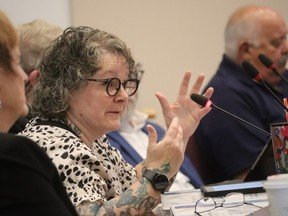Clark Kendall, a Rockville-based certified financial planner, tells WTOP that the key to becoming a “middle-class millionaire” is to save money that you typically would spend without much thought.
This article is part of WTOP’s monthlong series, “Money Matters,” where we explore tips for saving, budgeting and making your money work for you. Check for new articles all month, right here on WTOP.com.

Unless you win the lottery, most people don’t become millionaires instantly — but not everybody has the knack for saving money.
There isn’t one way to do it, and the best method often depends on what you’re saving for.
Clark Kendall, of Rockville, Maryland-based Kendall Capital, is a chartered financial analyst, an accredited estate planner and a certified financial planner. He shared tips on how to reach both short and long term saving goals.
First, the short term. Let’s say you wanted to save for a nice family vacation, or build a backyard deck.
“It boils down to utilizing short term investment products to meet short term needs,” Kendall said. “In most cases that’s probably savings accounts, CDs, money markets — things that will not fluctuate, depending upon what’s going on in the financial markets over a short period of time.”
Safety of principal is key, Kendall said.
“You don’t want the stock market to drop 10%, and you not be able to buy that vacation or deck that you’ve always wanted.”
To get the savings ball rolling, instead of having your entire paycheck deposited into a checking account, it can be automatically rerouted to an account where the money is less likely to be frittered away.
“If you don’t have an interest bearing checking account, maybe move $100 into savings or a money-market account that will pay you interest on those,” Kendall said. “That’s not only earning money, but also setting it aside.”
While automating moving money from a checking account to a savings account can be done easily, Kendall says a far more aggressive way to save money in the short term is to take a good look at where you’re spending money.
“If you’re going out to eat three times a week, can you cut that back?” Kendall said. “If you want to go to the Caribbean Islands, put a picture of the Caribbean Islands on the mirror in the morning, and make that a focus for you.”
Kendall said the key to becoming a “middle-class millionaire” is to save money that you typically would spend, without much thought.
“And that means knowing that making a cup of coffee at home for 50 cents or $1 compared to spending $6 or $7 at Starbucks is the real issue.”
Saving for long term goals
Putting money aside for retirement, to buy a home or saving for a child’s college requires different, long term strategies.
“In the private sector, for the most part, people have to set money aside, either in a 401(k) or 403(b) retirement plan,” Kendall said. “If your employer doesn’t have it, most likely you have to do it within an IRA.”
Kendall said the biggest concern for people saving for retirement is they want to retain purchasing power.
“Whether you have $100, $200, or a million dollars in your retirement, you want to make sure that in 10, 20, 30 years from now, that sum of money can buy the goods and services that it could buy today,” Kendall said.
As for where people save their money for retirement?
“That’s been basically utilizing long term bonds, stocks and mutual funds to meet the investor’s long term goals and objectives, and maintain long term purchasing power.”
As for first-time homebuyers, “It depends, realistically, on when are they going to need that down payment? Is it one or two years out? Or is it three two five months out, and how much can they save?”
And not every couple needs to buy a house, Kendall said.
“A lot of people get so set on buying a home, they forget the transaction cost to buy and sell a house is actually very expensive. I think people need to look at it with their eyes wide open as far as the true expense of owning a home and what their long term goals and objectives are.”
In terms of saving to send a child to college, earnings from a state-run 529 plan are a great choice, Kendall said.
Money contributed to the fund, on an after-tax basis, will continue to grow until it’s needed.
“When it’s withdrawn and sent to a higher education, the earnings are not taxed to the family members, and not taxed to the student going to school.”
When setting aside money in a 529 plan, the contributor can choose whether to invest in higher-yield accounts, which also carry more risk.
“If you’re doing it for a one-year-old, I would be primarily in stocks, because you have 17 or 18 years, but as students get older — in their junior, senior year in high school, I would pull that back in a less volatile, balanced portfolio.”
Get breaking news and daily headlines delivered to your email inbox by signing up here.
© 2025 WTOP. All Rights Reserved. This website is not intended for users located within the European Economic Area.







